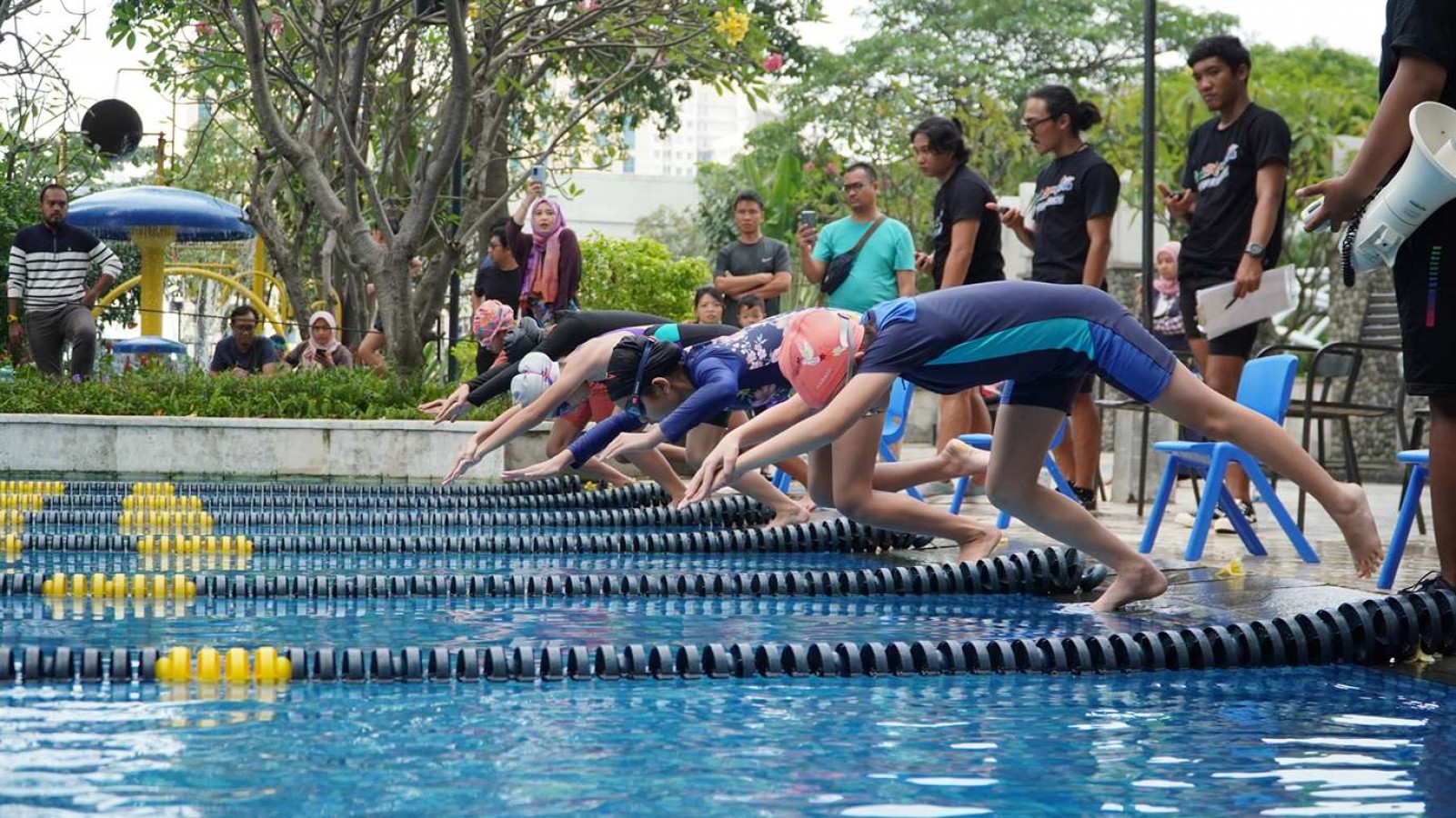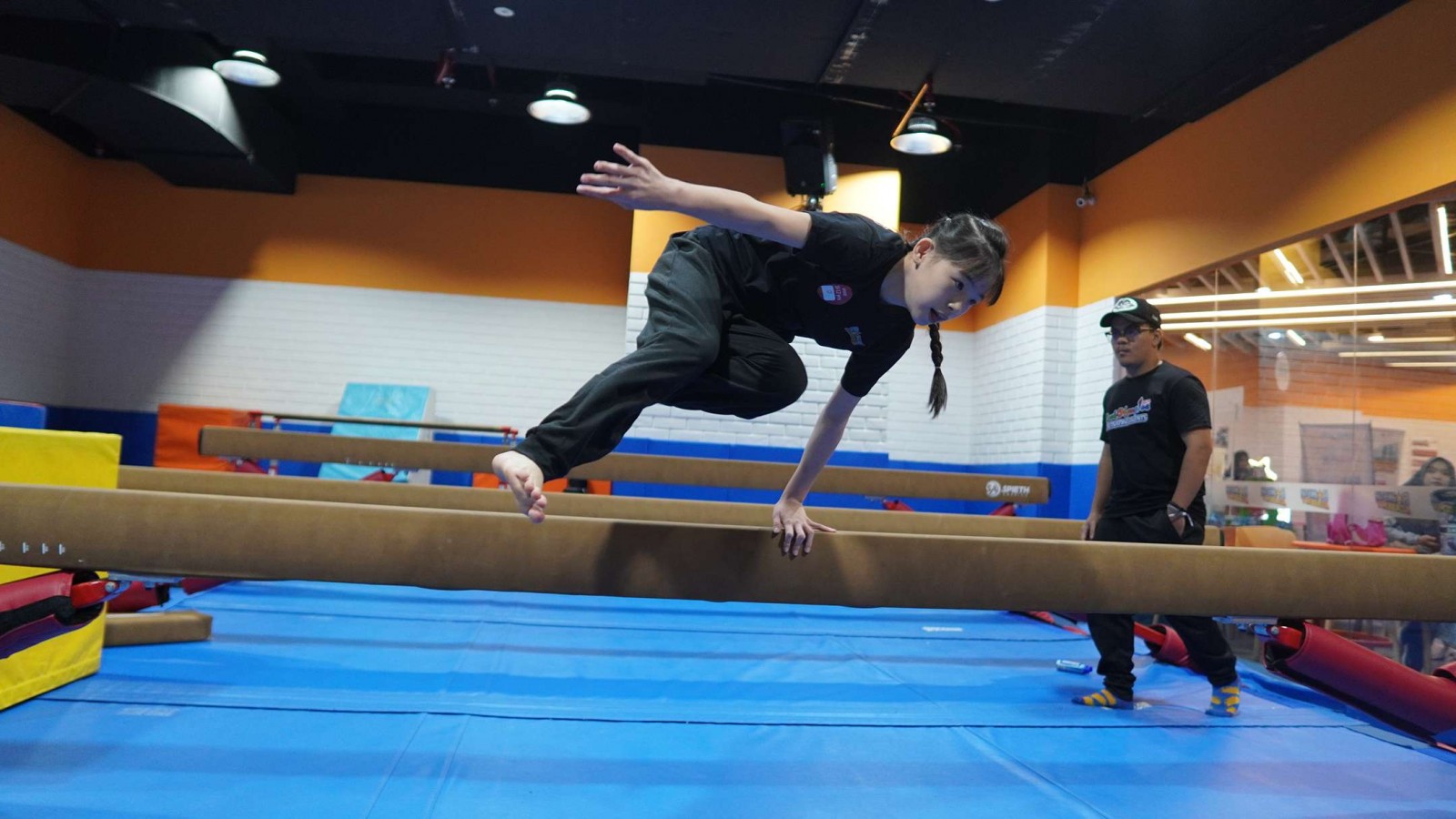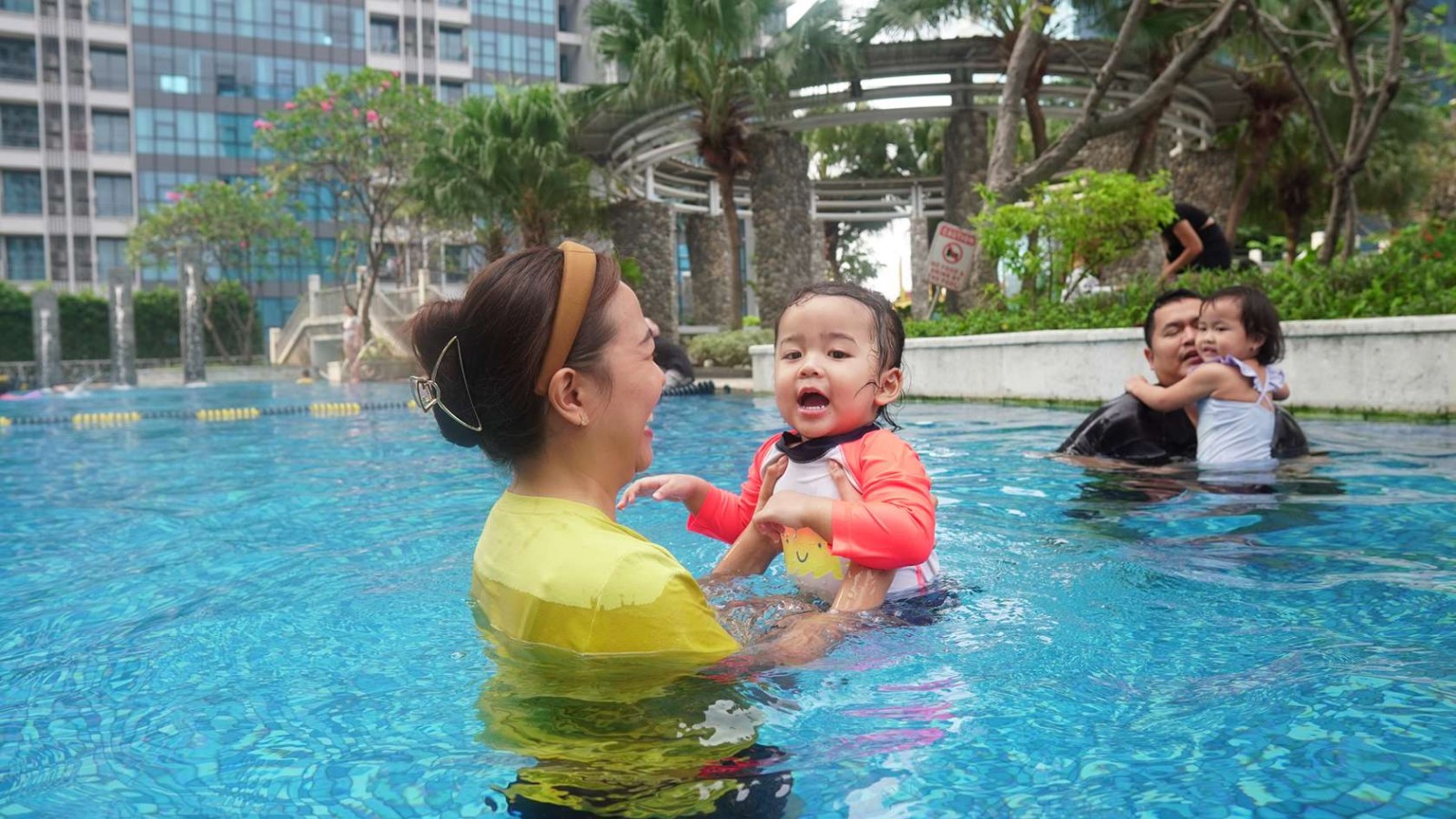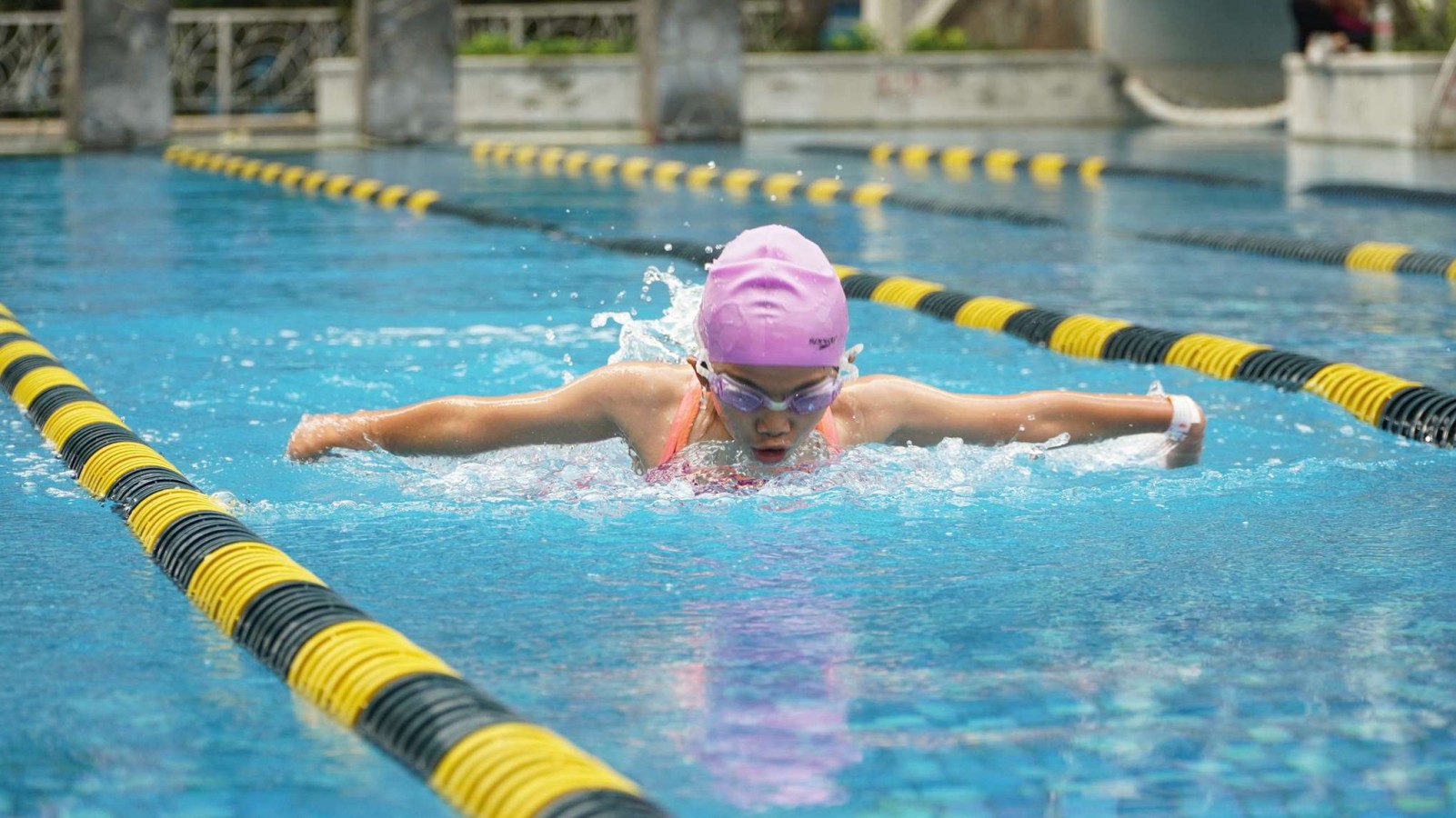The Best Strength and Conditioning Workout for Swimmers

Swimmers are renowned for their impressive physiques and powerful performances in the water. However, behind every strong swimmer is a dedicated strength and conditioning regimen designed to enhance performance, prevent injuries, and build overall muscular strength.
This article will guide you to get the best strength and conditioning workout for swimmers, focusing on core muscles, unilateral strength, legs, lats and back, chest, arms, and essential compound exercises.
Strength and Conditioning for Swimmers
Strength and conditioning have gained significant prominence in the realm of competitive swimming today. This approach focuses on the physical and physiological advancement of swimmers to achieve peak performance and heightened efficiency in the water. Its primary goal is to utilize targeted exercises to enhance swimmers' performance and speed.
You can strengthen and condition your body by incorporating swimming workouts into your routine. This is highly recommended, especially if you're aiming to participate in swimming competitions.
How To Train Swimmers Muscle
There are important muscles that must be trained to get good strength for swimming athletes. These muscles consist of the core, hands and others, which we will discuss in more depth here:
1. Core Muscles
The core is the foundation of a swimmer's power and stability. A strong core improves balance, streamline, and overall swimming efficiency. Key exercises for core strength include:
-
Planks
Begin in a push-up position with your body straight and your forearms on the ground. Keep your elbows directly below your shoulders. Engage your core and hold the position for 30-60 seconds.
-
Russian Twists
Sit on the floor with your knees bent and feet lifted. Lean back slightly and hold a weight or medicine ball. Twist your torso to the right, then to the left.
2. Unilateral Strength
Unilateral strength training helps swimmers address muscle imbalances and improve coordination. This is crucial for balanced performance and injury prevention.
-
Single-Leg Balances
Single-leg balances are a valuable strength and conditioning exercise for swimmers, focusing on improving balance, stability, and core strength. This exercise helps swimmers develop better body awareness and control, which is crucial for maintaining proper form and alignment in the water.
-
Front Lunges
Lunges are an effective strength and conditioning exercise for swimmers. They target key muscle groups like the quadriceps, hamstrings, glutes, and core, which are essential for powerful kicks and overall stability in the water.
By incorporating lunges into their training routine, swimmers can improve their lower body strength, enhance their balance, and develop the explosive power needed for starts and turns.
3. Legs
Strong legs are essential for powerful starts, turns, and overall propulsion in swimming. Here are key exercises to target the legs:
-
Squats
Stand with feet shoulder-width apart. Lower your body by bending your knees and hips, keeping your chest up and back straight. Return to the starting position.
-
Lunges
Step forward with one leg and lower your hips until both knees are bent at 90 degrees. Push back to the starting position and repeat on the other side.
4. Lats and Back
The lats and back muscles are crucial for powerful strokes and effective underwater movements. Here are several exercises you can do:
-
Pull-Ups
Hang from a bar with palms facing away. Pull yourself up until your chin is above the bar, then lower yourself back down.
-
Superman
The Superman exercise is an excellent strength and conditioning movement for swimmers, specifically targeting the lower back, glutes, shoulders, and core. These muscle groups are essential for maintaining proper body position in the water and generating powerful movements during swimming.
5. Chest
A strong chest aids in powerful strokes and efficient breathing.
-
Incline Push-Ups
Incline push-ups are an excellent strength exercise for swimmers, offering several specific benefits that align with the demands of swimming. This exercise focuses on the upper chest, shoulders, and triceps while also engaging the core, making it a great addition to a swimmer's dryland training routine.
-
Wide Push-Ups
Wide push-ups are an effective strength exercise for swimmers, particularly beneficial for targeting the chest, shoulders, and triceps. By positioning the hands wider than usual, this variation of the push-up emphasizes the outer chest and shoulders, contributing to the upper body strength that is crucial for powerful swimming strokes.
6. Arms
Strong arms contribute to powerful strokes and efficient turns. Here are several exercises for strength and conditioning for swimmers:
-
Arm Circles
Stand with your arms extended out to the sides, parallel to the floor. Make small circles with your arms, gradually increasing the size of the circles. Switch directions after 30 seconds.
-
Tricep Dips
Sit on the edge of a bench with your hands beside you. Slide your buttocks off the edge and lower your body by bending your elbows, then press back up.
The Benefits of Swimming Strength Workouts
Swimming strength workouts offer a fantastic way to boost your fitness and feel great—all while being kind to your body. Here are the explaination why they’re worth diving into:
1. Great for Your Heart and Muscles
Swimming is an amazing workout for your heart and muscles, yet it’s gentle on your body. Unlike weight-bearing exercises like running or gym workouts, swimming puts less stress on your joints. All that kicking, pulling, and pushing in the water acts as a mini-resistance workout that targets your arms, shoulders, glutes, and even your abs or core!
2. Full-Body Strength
When you swim, almost every muscle in your body is engaged. Strength-focused exercises in the pool—like using resistance bands or paddles—help tone your body and build balanced muscle strength.
3. Low-Impact, High Reward
Because swimming is low-impact, it’s a perfect option for people of all ages, fitness levels, or those recovering from injuries. You can work out hard without worrying about stressing your joints.
4. Improved Fitness and Technique
Following a swim program not only enhances your fitness but also helps refine your technique. Over time, you’ll swim more efficiently, improve your times, and get more enjoyment out of your pool sessions.
5. Boosts Core Strength
Your core muscles are vital for maintaining good swimming posture. With every stroke, your abs are hard at work. Exercises like treading water or flutter kicks can supercharge your core stability, benefiting your balance on land too!
6. Builds Endurance
Swimming strength workouts improve not just muscle tone but also your stamina. You’ll be able to swim longer, faster, and more effortlessly over time, all while giving your heart and lungs an excellent workout.
Learn Strength and Conditioning Swim With Rockstar!
Strength and conditioning play a vital role in enhancing a swimmer’s performance in the pool. Consistency, proper technique, and adequate recovery are key to maximizing the benefits of these workouts.
To achieve your swimming goals, consider enrolling with a trusted and skilled instructor at Rockstar Academy. Our swimming program, part of Rockstar Academy Sports & Performing Arts, caters to children and teens from 6 months to 18 years old.
We also utilize the ASCTA (Australian Swimming Coaches and Teachers Association) international curriculum to ensure high-quality instruction.
At Rockstar Academy, students also benefit from our unique Elite Championships and RockOlympics events, where swimmers, as young as 1 year old, can challenge themselves and experience the rewards of their dedication and hard work.
Join Rockstar Academy today and see how our comprehensive program and exciting competitions can elevate your swimming skills. You can also claim your free sign up class and experience the program beforehand!
FAQ
What are the main benefits of strength and conditioning for swimmers?
Strength and conditioning offer several key benefits for swimmers, including improved power and speed, reduced risk of injuries, enhanced muscular endurance, and better overall technique. These workouts help swimmers develop a stronger physique, which translates into more efficient and effective performance in the water.
How often should swimmers incorporate strength and conditioning into their training routine?
Swimmers should aim to include strength and conditioning workouts 2-3 times per week. This frequency allows for adequate muscle recovery and complements their swim training without causing excessive fatigue.
When is the best time for swimmers to do strength training?
The best time for strength training is generally on days when swimmers are not doing intense swim workouts. It can be scheduled in the morning or after swimming practice, depending on individual schedules and energy levels.
How can swimmers avoid overtraining and ensure proper recovery?
To avoid overtraining, swimmers should balance their strength workouts with adequate rest and recovery. It's important to listen to their bodies, adjust the intensity of workouts as needed, and incorporate proper nutrition and hydration to support muscle recovery.
Are there specific exercises to improve starts and turns in swimming?
Yes, exercises that develop explosive strength and power are particularly beneficial for improving starts and turns. Examples include box jumps, medicine ball slams, and power cleans. Plyometric exercises also help with speed and agility.



